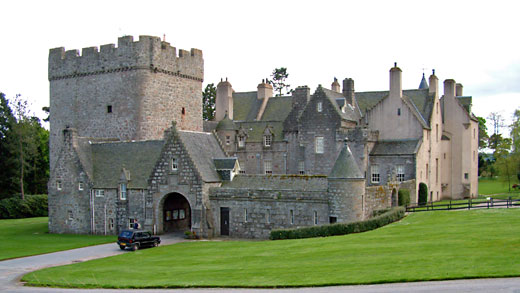|

For most of its existence Drum Castle was the home of the Irvine family. Their changing needs have resulted in the current form of the castle, which incorporates major architectural features from the medieval, Jacobean and Victorian periods.
The earliest part of the castle is a late 13th century tower house, one of the oldest in Scotland. In 1323, William de Irwyn was granted the charter of the Barony of Drum and also given the Tower of Drum. Three centuries later the tower house could no longer offer the standard of accommodation required and in 1619, the 9th laird, moved into a new mansion that he built alongside the now neglected tower.
During the Civil War the 10th laird and his sons were supporters of Charles I in a region where most were Covenanters. By the end of the war the castle had been besieged and captured twice and garrisoned four times.
During the 19th century more additions and modifications were made to the castle. These included an extension on the north side of the mansion which provided more space and also connected the mansion to the old tower. A hole was knocked through the massive walls of the previously empty tower so that the first floor could be converted into a library. The library is only accessible through the house, while the rest of the tower is only accessible from outside in the garden.
The castle was given to the National Trust for Scotland in 1975.
|